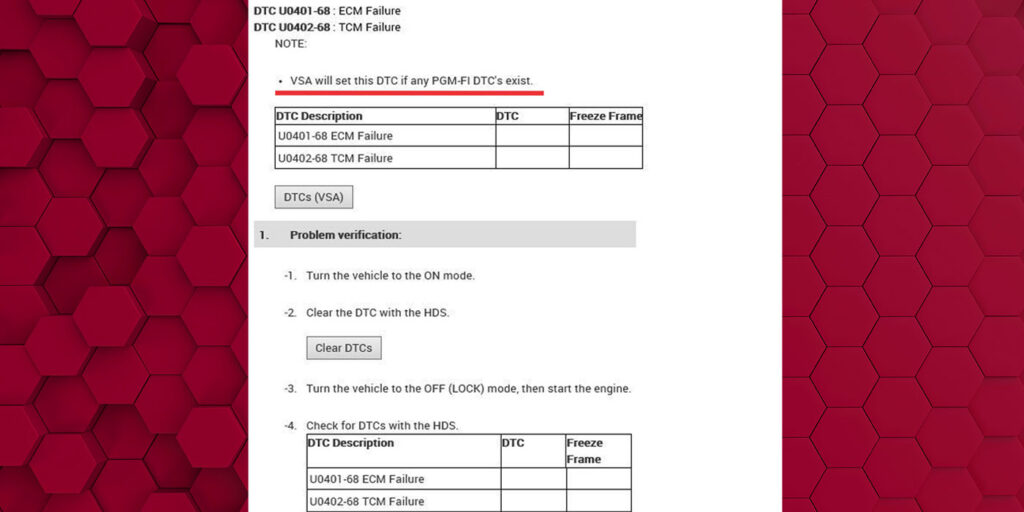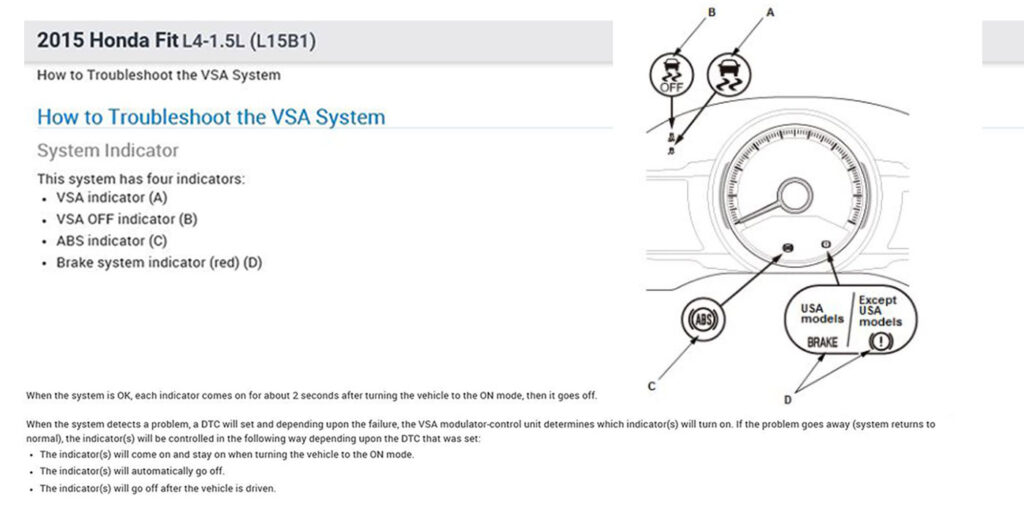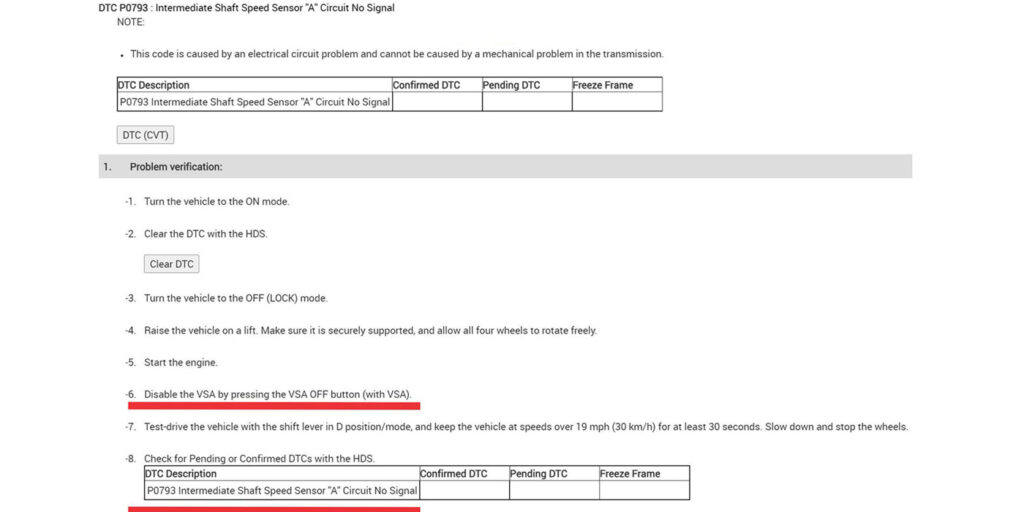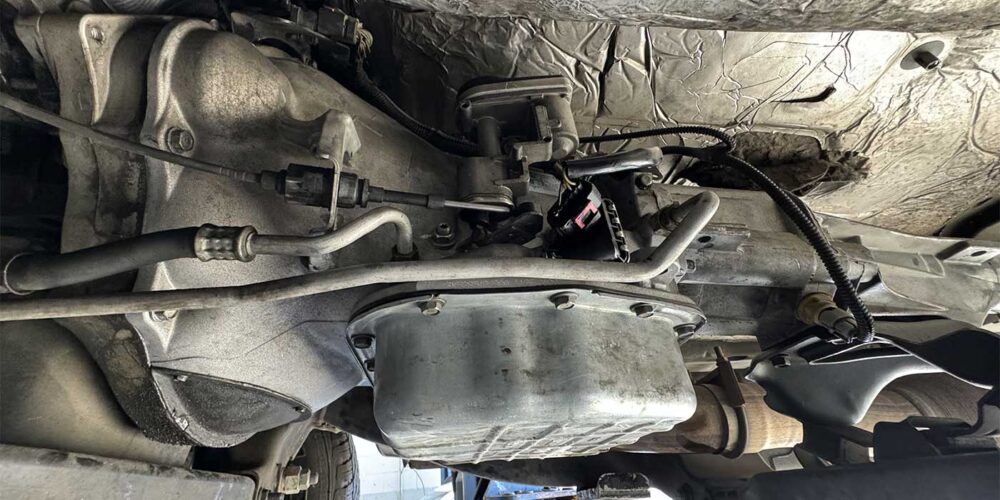A Honda Fit utilizing a GTAA continuously variable transmission will set a DTC after reaching about 30 miles per hour. When a scan tool is used to pull the code or codes set, a U0401-68 code appears in the scan tool with the explanation of it being a TCM failure. If a tech uses the scan tool definition of this code as a diagnostic starting point, it may result in changing the TCM, which will not correct the problem. Time may be invested in checking power and grounds at the TCM before condemning the TCM, and when another TCM is installed only to have the same problem, this Honda Fit will give you a fit.
The scan tool indeed provided the correct definition of code U0401-68. But, when you look this code up in All Data or ProDemand to learn what Honda says about it, you will also read that the Vehicle Stability Assist (VSA) will set this code if any PGM-FI DTCs exist (Figures 1 and 2).


However, the scan tool is not pulling another code. The tip here is to clear the code, disable the VSA system and drive the vehicle. This will allow the PGM-FI to provide what it is that caused the VSA system to set code U0401-68.
In this case, a P0793 for an Intermediate Speed Sensor A Circuit has no signal. When you look this code up, it is there that you discover that the VSA must be turned off for this code to be displayed in the scan tool (Figure 3).

The real kick in the pants is to discover that the connector was not fully plugged onto the speed sensor. A simple one-second fix that took days and unnecessary expenditure to locate and resolve.
Read more stories from our Technically Speaking column series here.














